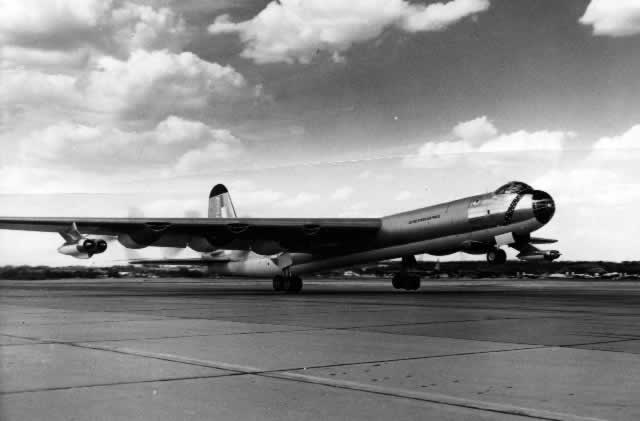An Airworthy B-36 in Flying Status?
More About the B-36: Design, Production, Deployment & Scrapping B-36 - National Museum of the U.S. Force B-36 - Pima Air & Space Museum B-36 - Strategic Air Command & Aerospace Museum |
The Convair B-36 Peacemaker was one of the largest airplanes ever built, and was a key element in maintaining peace during the Cold War with Russia during the 1950s. Originally conceived in 1941 as an intercontinental bomber, it came into production in the late 1940s.
These giant bombers were built by the Consolidated Vultee Aircraft Corporation (later known as Convair) at its assembly plant across the runway from Carswell Air Force Base in Fort Worth, Texas.
The final Peacemaker, B-36J-III-10-CF, S/N 52-2827A, came off the assembly line on August 14, 1954, and was assigned to the 92nd Bomb Wing at Fairchild AFB in Spokane, Washington.
When production ceased, a total of 382 B-36 Peacemakers had been built, along with one XC-99 and two YB-60 jet variants.
Four B-36 were selected for preservation, along with the cargo version of the B-36, the XC-99.
End of the Line and Scrapping of the B-36
By 1953, the Air Force had made the decision to procure the Boeing B-52 Stratofortress and not Convair's proposed YB-60 as its next long-range heavy bomber.
The end of service life for the B-36 had begun. In February of 1956, the first B-36 aircraft arrived at Davis-Monthan Air Force Base in Tucson, Arizona for storage and ultimate scrapping.
Mar-Pak Corporation was the agent of the U.S. Government assigned to the B-36 dismantling program.
By late 1958 only 22 B-36Js were left on active duty, at Biggs AFB in Texas. On February 12, 1959, the last operational flight of the B-36 took place, as 52-2827 flew from Biggs AFB to Fort Worth. It remained on display for several years there, until its move to the Pima Air and Space Museum in Tucson where it is currently located.
The last Peacemaker was scrapped on July 25, 1961.
B-36 Peacemakers in storage at Davis-Monthan Air Force Base in Tucson in 1958 RB-36H Serial Number 51-13723 of the 72nd Bombardment (Heavy) Wing is in the foreground |
 |
Mar-Pak Corporation ad for the sale of surplus B-36 components at its Davis-Monthan facility in Tucson, AZ |
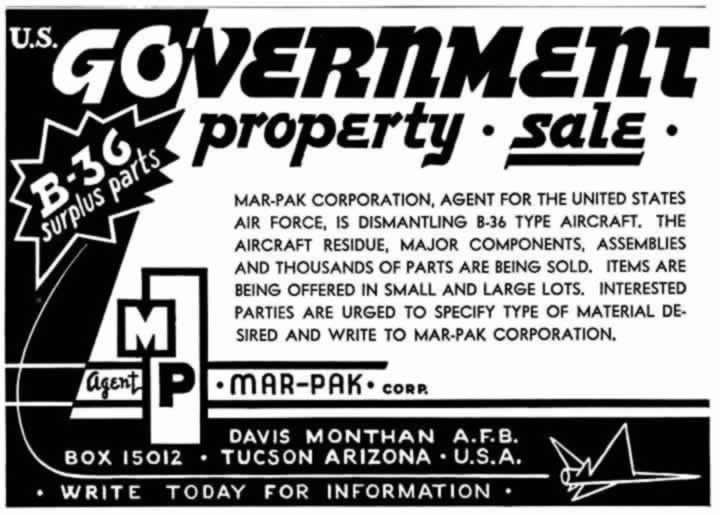 |
Will There Ever Be Another Airworthy B-36?
Some people want to know ...
Are there any B-36 bombers still flying today?
Could the Convair B-36 ever fly again?
The answer is "no". But it remains a topic of interest to many aviation enthusiasts.
These are reasonable questions, given the successful projects to restore two B-29 Superfortresses to flight status, i.e., FiFi and Doc. However, there are currently no B-36s in airworthy status.
Several other vintage aircraft models include airworthy restorations, such as the B-17 Flying Fortress, B-24 Liberator, B-25 Mitchell, P-51 Mustang, C-47, F-100 Super Sabre and others. Why not have an airworthy B-36 in flying status?
The main problem is that only four surviving B-36 airframes exist, all in museums. Two airframes are displayed outdoors, at the Pima Air & Space Museum in Tucson, and the Castle Air Museum in Atwater, California. Two others are indoors, at the Museum of the U.S. Air Force in Dayton, Ohio, and the Strategic Air Museum in Ashland, Nebraska.
| Part of a 1970s advertising campaign to "Help the B-36 Fly Again" |
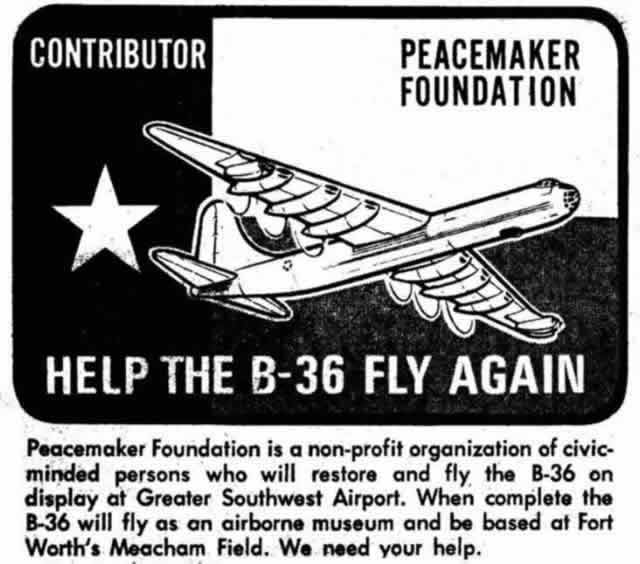 |
The Museum of the United States Air Force is the custodian of these four planes, "on loan" to the museums named above. The Air Force, and/or the Museum, would thus have to be involved in releasing one of these B-36s to a group involved in the restoration to airworthiness.
Parts of a fifth B-36, formerly on display at the Air Force Museum, are located in Newbury, Ohio.
The next obstacle is the decaying mechanical, electrical and structural components. Decades of corrosion would have to be reversed and fixed. The inventory of available parts is small. The cost would be large, in the multi-million dollar range, and the required skilled volunteer workforce monumental.
Maintenance would be a consideration also. Spark plug maintenance alone would be costly and time consuming. With six piston engines with 28 cylinders each, (56 spark plugs per engine), a total of 336 plugs would have to be maintained.
In the early 1970s a project was initiated by the Peacemaker Foundation in Fort Worth, Texas, to raise funds to restore and fly B-36 S/N 52-2827, then on display at the Greater Southwest International Airport. The restored B-36 was to be based at Fort Worth's Meacham Field and used as an airborne museum. The image to the right shows part of the advertising campaign to "Help the B-36 Fly Again". However, the project was never finalized.
 |
The B-36 52-2827 made its final journey in 2006, trucked from Fort Worth to Tucson, Arizona where it was reassembled and placed on display at the Pima Air & Space Museum.
In today's world, the cost of restoration and maintenance would be in the millions of dollars. Couple that with a lack of parts and only four possible airframes to work with, the probability of an airworthy B-36 is minimal.
So while we would love to see and hear a B-36 in the air, the prospect for this happening does not appear to be viable in the near future.
The B-36 Survivors
Only four complete Convair B-36 Peacemaker air frames have survived of the 382 that were built. We have had the good fortune of viewing and photographing all four.
The B-36 survivors are listed below ... click the links for additional information and photographs of the airplane at each facility.
Facility |
Location |
Model |
Serial No. |
| National Museum of the U.S. Air Force | Wright-Patterson Air Force Base Dayton, Ohio |
B-36J-1-CF | 52-2220 |
| Pima Air and Space Museum | Adjacent to Davis-Monthan Air Force Base Tucson, Arizona |
B-36J-10-CF | 52-2827 |
| Strategic Air Command and Aerospace Museum | Ashland, Nebraska | B-36J-1-CF | 52-2217 |
| Castle Air Museum | Atwater, California | RB-36H-30-CF | 51-13730 |
NOTE: Parts of a fifth B-36, S/N 42-13571, on display at the Air Force Museum in Dayton until December of 1957, are located in Newbury, Ohio, in the Walter Soplata Aviation Collection. It was originally a YB-36, the first Peacemaker with the domed cockpitand later converted to a RB-36E.
Convair B-36J-10-CF Peacemaker, S/N 52-2827, the last production B-36J,
now restored and on display at the Pima Air & Space Museum in Tucson, Arizona |
Convair B-36J Peacemaker S/N 52-2827 at the Pima Air & Space Museum in Tucson, Arizona view more photos of this B-36 |
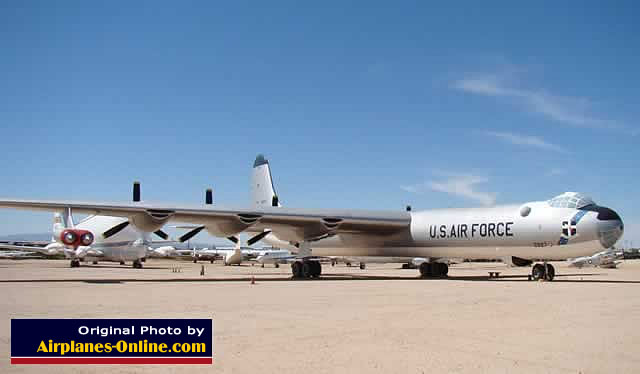 |
B-36 Peacemaker S/N 52-2220 on display at the Museum of the United States Air Force, Wright-Patterson AFB, Dayton, Ohio view more photos of this B-36 |
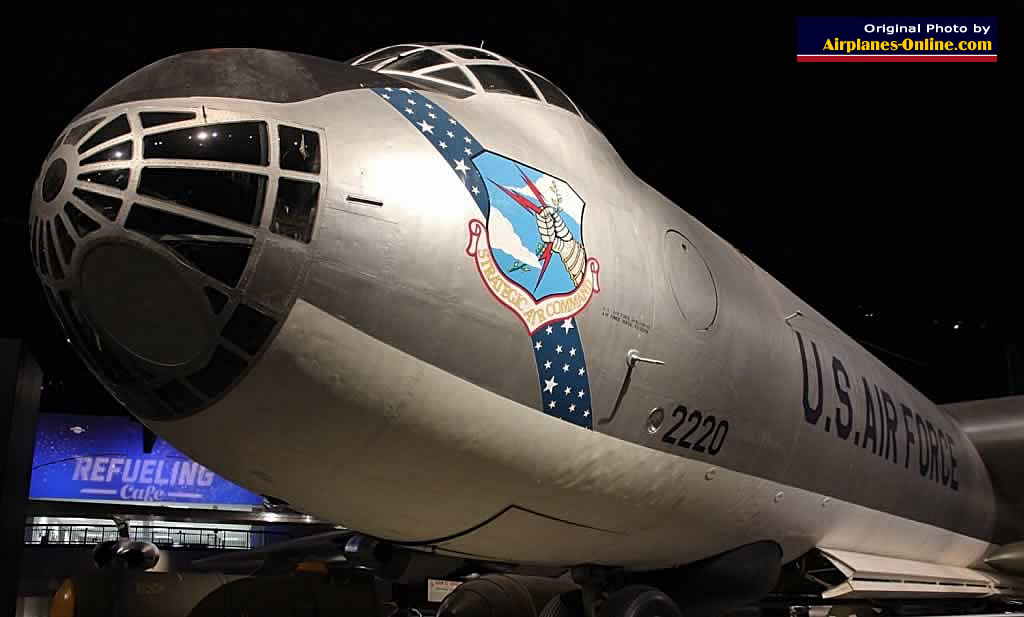 |
RB-36H Serial No. 51-13730, at the Castle Air Museum in Atwater, California view more photos of this B-36 |
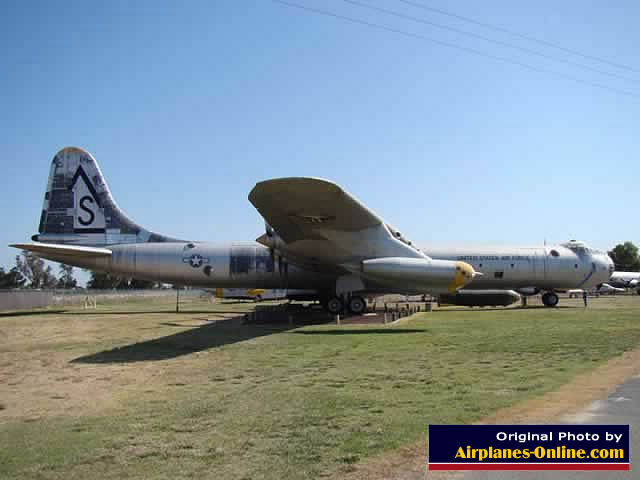 |
Convair B-36J Peacemaker S/N 52-2217 at the Strategic Air & Space Museum in Nebraska view more photos of this B-36 |
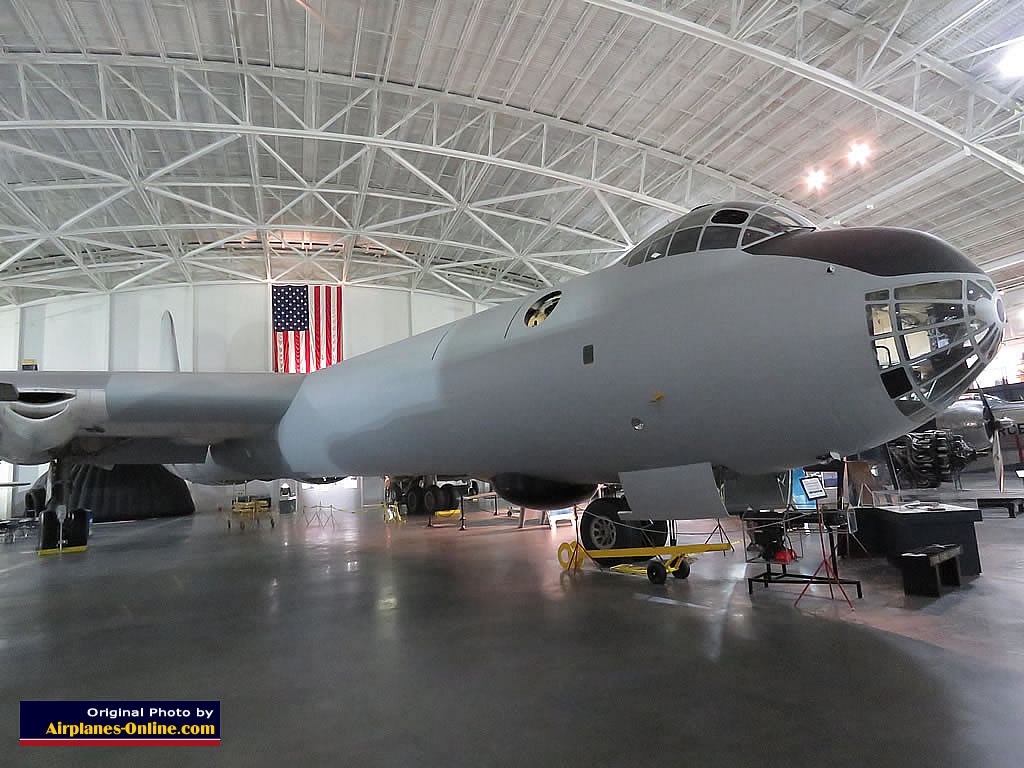 |


